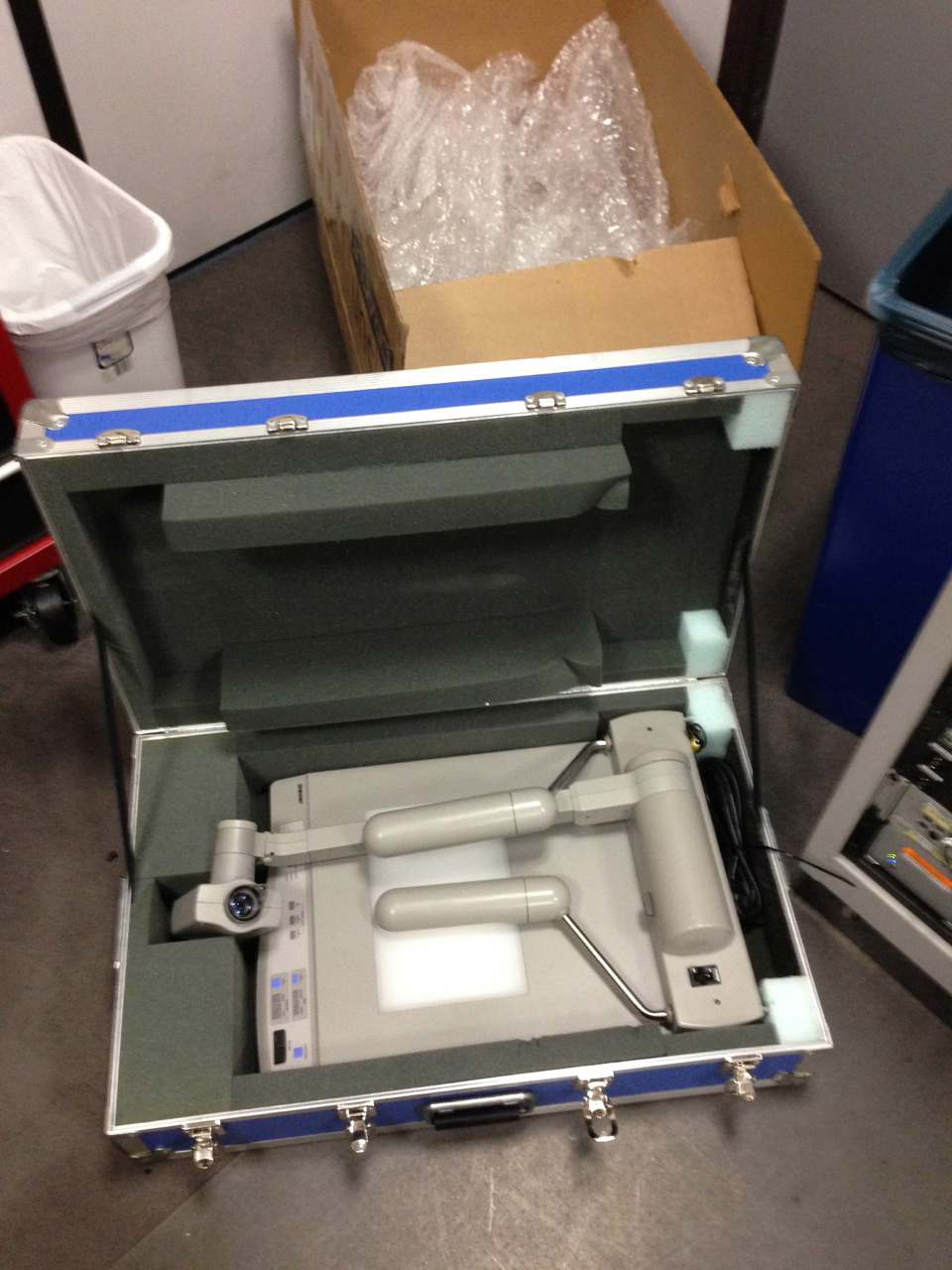Fun with epoxy!
I recently bought several Sony video presentation stands off eBay for work.
As with any eBay purchases, the results were a bit hit-and-miss, especially when it came to packing and shipping. One of the stands was so poorly packed that the camera had broken off, and an entire corner of the base had broken off.

Fortunately, all of the electronics still worked, so with a judicious application of J-B Weld PlasticWeld epoxy, I was able to repair the damage and getting a working stand out of it.
One of the other stands wasn't so lucky. Ironically, it came packed in a massive, foam-padded hard case packed inside of another box with bubble wrap. So of all of the eBay stands I bought (8 in all), this was by far the best protected.

But somewhere along the way, despite the box showing no damage, it must have gotten dropped pretty hard. Hard enough, that the camera didn't work.
Upon opening up the camera, a small surface-mount component fell out. It was about the size of a grain of rice. Here's a close-up of a working camera - the component is labeled 4.19 A. I have no idea what the component even is… but I knew for the stand to even have a chance to work, it had to be put back on the other camera. Somehow.

The problem is, this is a surface-mount component that is far smaller than my average-at-best soldering skills could even approach repairing. So I had to figure something else out. I mean after all… almost 40 bucks was at stake!
After some research, I found something pretty nifty - Atom Adhesive's electrically conductive epoxy. I don't remember if I'd heard about this stuff before, or was just thinking, "Hey… I wonder if anyone makes glue for repairing electronics?", but lo and behold - there it was. I had nothing to lose but about six bucks.
So I tried it, and after some fussing around to get the amount right so it didn't squish out all over the circuit board, it worked! To be on the safe side, I used quite a bit to anchor it down, but I checked it with a multimeter to make sure I wasn't causing any shorts.
It takes a full day to cure (unless you apply some heat to speed it up) but that's good, since it gives quite a lot of setup time to get everything just right. I started over at one point (part of the fussing), but everything cleaned off neatly with some isopropyl alcohol. I applied the epoxy with a sharpened sliver of wood (a toothpick would have been too big).
The stuff is surprisingly conductive - even in tiny amounts, and you can test your work while it's still liquid. On a per-use basis it's a bit expensive, but I don't think I could have repaired this any other way. Now I'm looking for excuses to try it on something else. ![]()



3 Comments
Recommended Comments